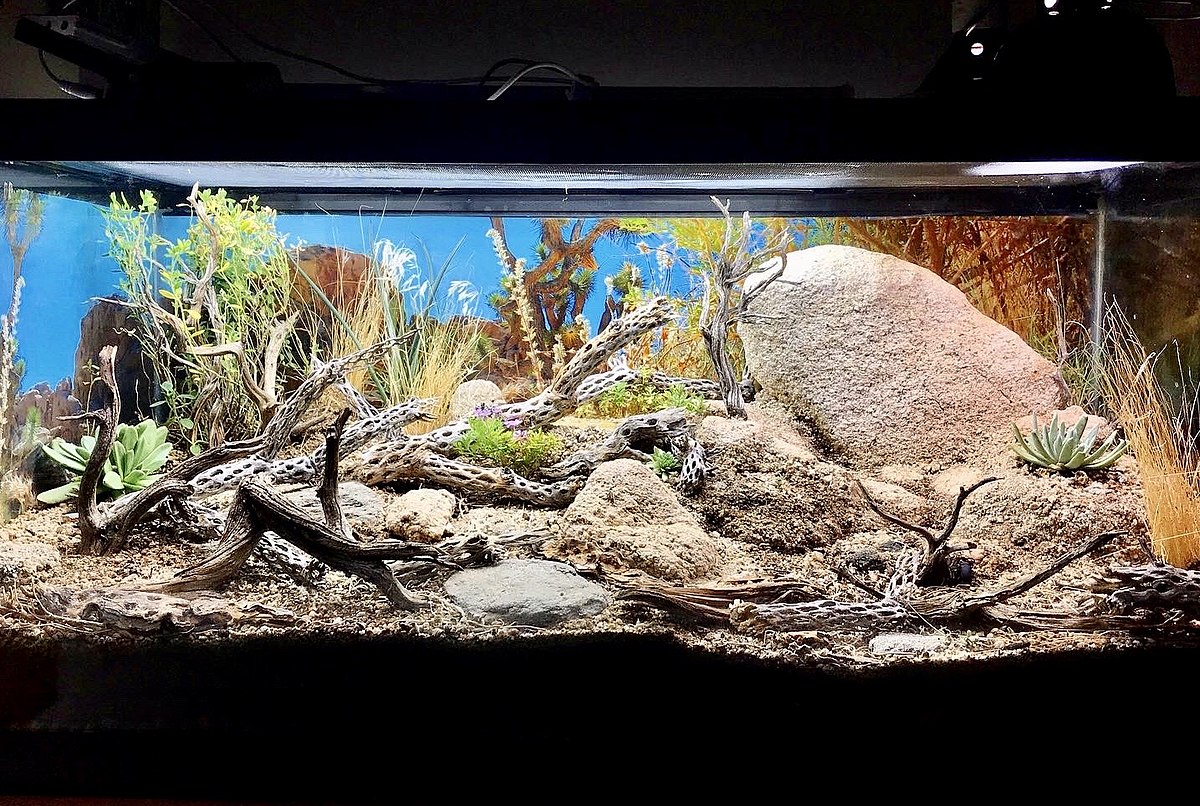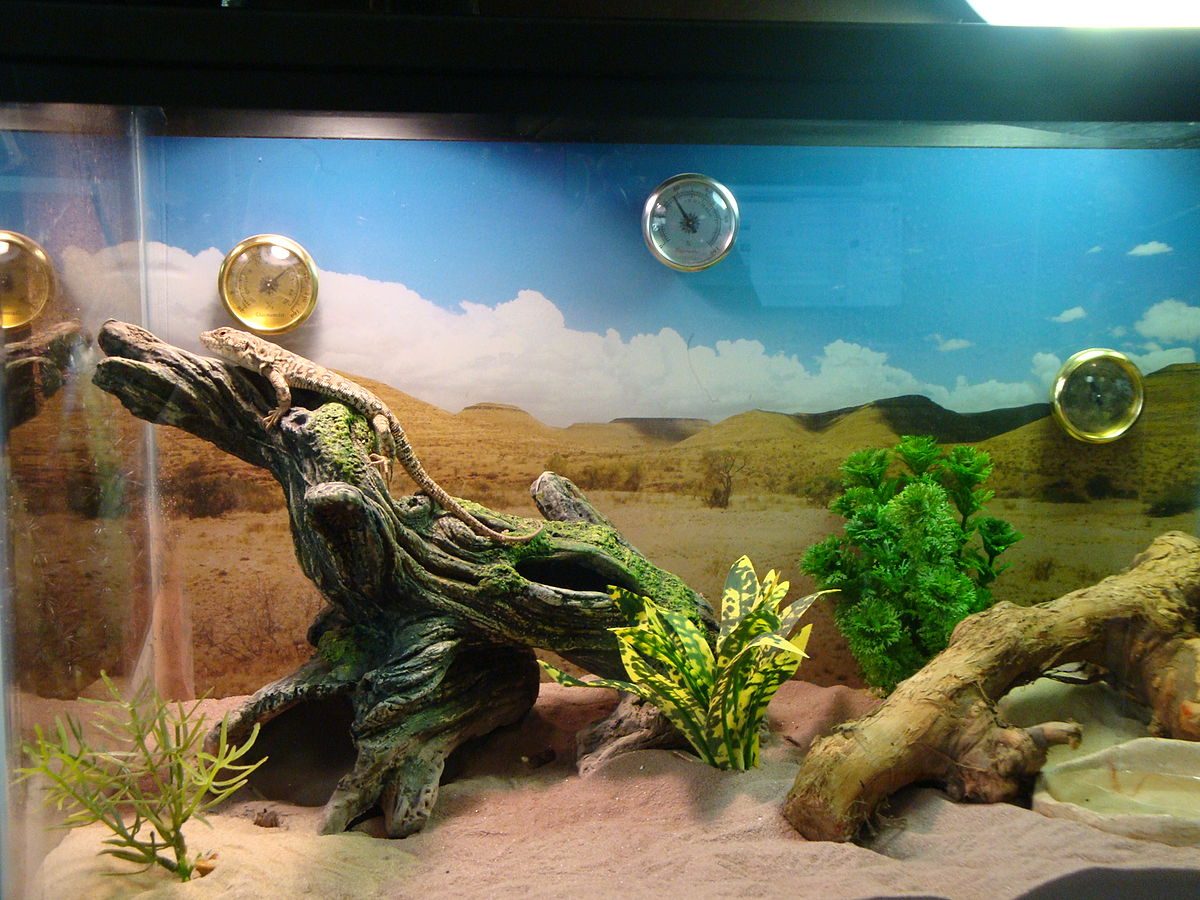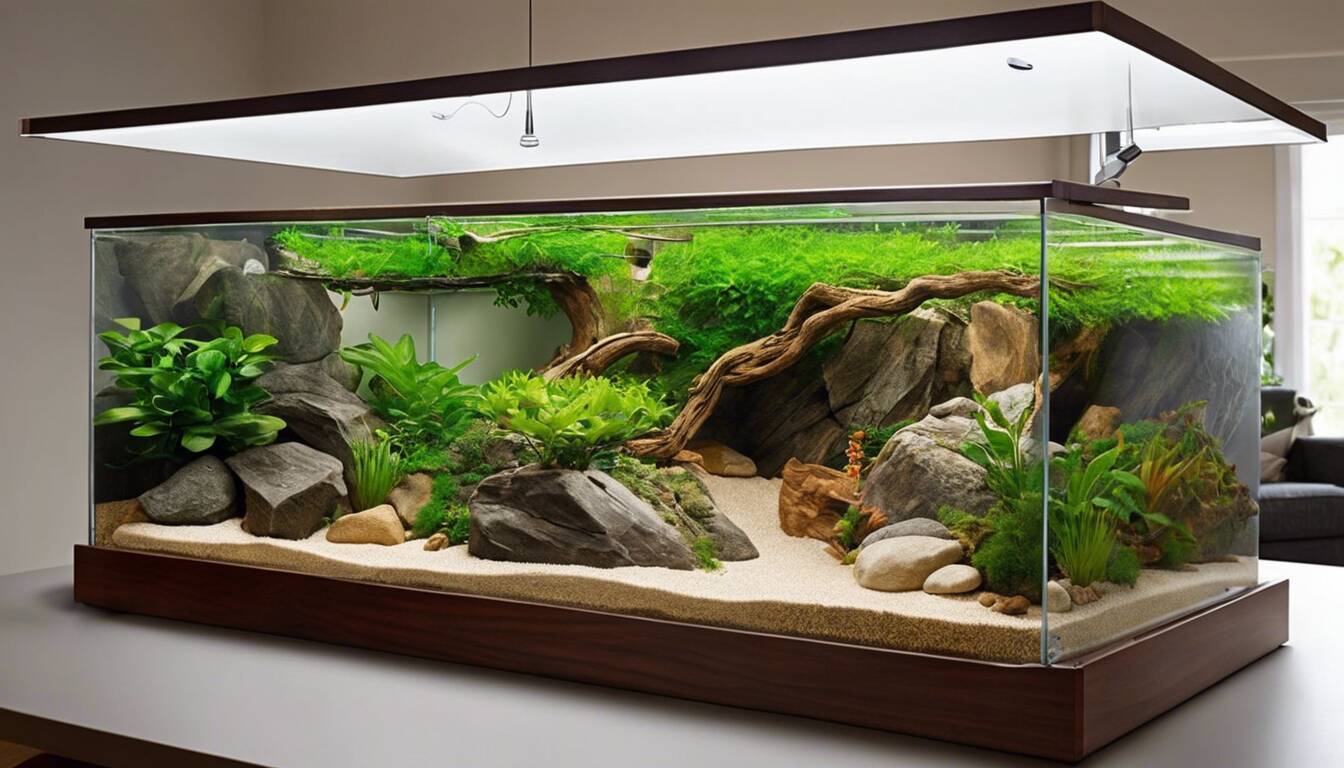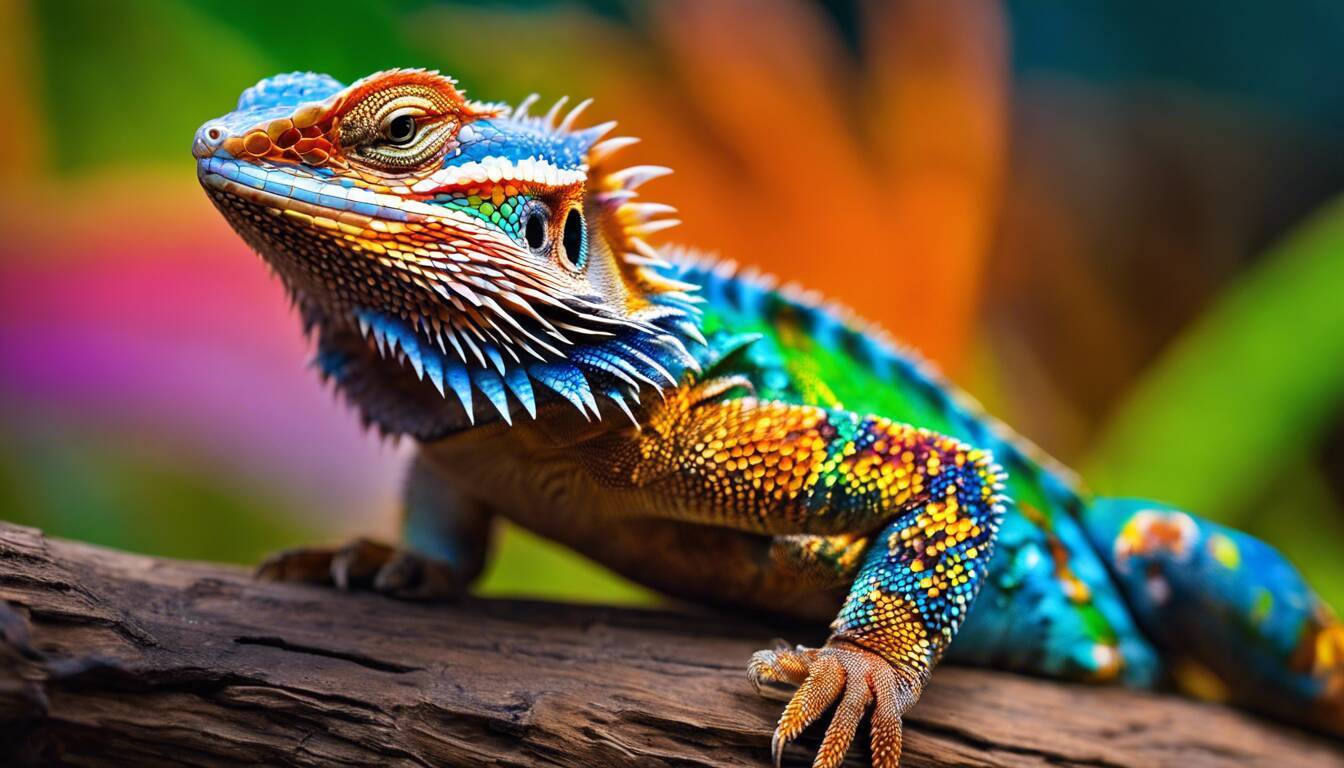The foundation of an optimal bearded dragon habitat is its size. Providing sufficient space, at least 75 gallons for a single adult dragon, allows ample room for movement and exploration. This doesn’t just mean floor space; height and climbing structures also play crucial roles, replicating a more natural environment where these pets can feel at home. There’s no need to stick with basic square enclosures, creative shapes can add an unexpected twist to your pet’s home. Details matter when crafting your dragon’s domain.
Our website offers a wide range of creative enclosure ideas for bearded dragons, including DIY terrarium setups with naturalistic features, such as branches for climbing, basking spots, and live plants to create an environment that closely resembles their natural habitat. Additionally, we provide insights on how to incorporate basking platforms and removable food/water dishes into the enclosure design, promoting both practicality and visual appeal.
Optimal Bearded Dragon Habitat Size
The size of a bearded dragon’s enclosure is vital to its health and well-being. As these reptiles mature, they need ample space to move around, soak up heat, and explore their surroundings. For a single adult bearded dragon, an enclosure with a minimum volume of 75 gallons is recommended to provide enough space for them to extend their limbs, climb on rocks or branches, and move about comfortably.
It’s important to note that as hatchlings and juveniles, bearded dragons can start off in a smaller 20-gallon tank. However, it’s essential to plan for their growth and eventual need for more space. The confined space of a smaller tank can restrict their movement as they mature, leading to stress and discomfort. Therefore, it’s advisable to transition them to a larger habitat as they outgrow their initial tank.
The floor space of the enclosure is particularly important, as bearded dragons are terrestrial animals that do a lot of walking around. A large floor area contributes significantly to their overall well-being by facilitating natural behaviors such as foraging and exploring.
Furthermore, the height of the enclosure shouldn’t be overlooked. Bearded dragons are known for their climbing abilities, so providing vertical space allows them to express this instinctive behavior. Adding climbing structures or driftwood provides them with opportunities to exercise their natural tendencies while promoting physical activity.
Imagine having your pet lizard cooped up in a small space similar to a confined room. It’s not difficult to see why providing a spacious and enriching habitat is vital for their physical and mental health.
Providing the ideal environment for your bearded dragon ensures their happiness and sets the stage for a healthier and more fulfilling life.
Now, let’s venture into the different types of stunning enclosures that can turn your bearded dragon’s home into a captivating oasis.
Exciting Enclosure Types
Creating the perfect home for your bearded dragon not only ensures its comfort but also contributes to the overall aesthetic of your living space. Here are a few exciting enclosure types that you can consider:
Vivarium
For many reptile owners, a glass-walled vivarium is an incredibly popular choice. Its see-through walls allow you to observe your dragon easily, and the secure mesh lid provides both safety and easy access for maintenance. This kind of enclosure gives you a clear view of your pet while still ensuring its safety and comfort.
Glass also holds heat well, creating a warm environment for your dragon. Plus, it’s easy to clean—always a bonus when it comes to pet care routines. Imagine being able to watch your dragon moving around and exploring in its well-lit vivarium habitat, providing an immersive experience for both of you.
Many vivariums are designed with multiple levels or platforms, allowing your pet some freedom of movement and space for exercise. Additionally, they often come with built-in hooks or fixtures, making it easy to hang basking lights or various climbing structures.
Custom-built Enclosures
Some reptile enthusiasts prefer custom-built wooden enclosures. These custom setups offer greater flexibility in design, size, and layout, allowing you to cater specifically to your dragon’s needs.
If you’re a DIY enthusiast or value customization, this might be a great option. Innovative designs such as turnkey ventilation systems and sliding glass doors are often integrated into these custom-made enclosures, offering convenience and practicality. Moreover, wooden enclosures provide excellent insulation and can help maintain the necessary temperature gradients within the habitat.
Furthermore, you can personalize the enclosure to include various elements that suit your dragon’s habits and preferences; for example, incorporating different levels or creating a sandy area if your dragon enjoys digging. This level of customization ensures that the habitat perfectly suits your pet’s individual requirements.
Considering the variety of enclosure types available, it’s essential to select one that aligns with both your bearded dragon’s needs and your preferences as a pet owner. Each type has its own unique benefits and considerations to keep in mind when designing the perfect living space for your scaly companion.
Suitable Substrate Choices
The substrate you choose for your bearded dragon’s enclosure can significantly impact its health and comfort. Here are a couple of popular options and some insight into their benefits and drawbacks to help make an informed decision.
Tile Substrate
A common choice among bearded dragon owners, tile substrate offers a solid surface that is easy to clean and maintain. Not only does it provide a stable surface for your pet to walk on, but it also helps in maintaining proper hygiene within the enclosure. This type of substrate comes in a variety of colors and textures, allowing you to create a visually appealing habitat while ensuring your pet’s well-being.
One key advantage of using tiles is that they do not present a risk of impaction for your bearded dragon. Additionally, tiles have low bacterial growth potential, making them easier to clean and maintain compared to other substrates. The ease of cleaning is especially beneficial for ensuring the health and hygiene of your pet’s living space.
Reptile Carpet
Another popular option is reptile carpet, which provides a soft and comfortable surface for your bearded dragon to walk on. It offers the benefit of being safe for your pet while also being easily removable for cleaning. This type of substrate comes in various designs, allowing you to customize the enclosure’s aesthetics.
Reptile carpet has gained popularity due to its easy maintenance and suitability for bearded dragons. It eliminates the risk of impaction associated with loose particle substrates while offering a comfortable environment for your pet.
Given these options, it’s important to consider the specific needs and behavior of your bearded dragon when choosing the substrate for their enclosure. The goal is to create a habitat that not only looks visually appealing but also prioritizes the health and safety of your beloved reptile companion.
Moving ahead from creating the perfect habitat setting, let’s now explore the critical elements of providing essential lighting and heat sources for your bearded dragon.
Essential Lighting & Heat Sources
Creating the ideal environment for your bearded dragon isn’t just about the enclosure—it’s also about providing the right lighting and heat sources. These components are vital for simulating their natural habitat and ensuring their health and well-being.
UVB Lighting: Mimicking Natural Sunlight
Just like humans, bearded dragons require exposure to ultraviolet B (UVB) light to stay healthy. UVB lighting is essential for helping them produce vitamin D3, crucial for calcium absorption in their bodies. Without proper UVB exposure, bearded dragons can develop metabolic bone disease, leading to weaker bones and other health problems. Therefore, investing in full-spectrum UVB lighting is crucial for the overall health of your pet bearded dragon.
When setting up the UVB lighting in the enclosure, it’s important to consider the distance between the light source and your pet. To achieve optimal results, ensure that the UVB bulb is placed 12 to 18 inches away from where your bearded dragon basks. This mimics the distance from the sun in their natural habitat and allows them to receive adequate UVB exposure without being too close or too far away.
Heat Lamps: Creating Basking Spots
In their natural environment, bearded dragons spend a significant amount of time basking under the sun to regulate their body temperature. Therefore, it’s essential to recreate this heat gradient within their enclosure. Having heat lamps in the enclosure helps maintain the necessary temperature gradient, allowing your pet to move between cooler and warmer areas as needed.
When choosing heat lamps, it’s crucial to select bulbs that emit infrared heat while also providing visible light. This not only ensures the comfort of your bearded dragon but also allows for easy monitoring of their behavior, as they are more active when exposed to bright light.
By incorporating both UVB lighting and heat lamps into your bearded dragon’s enclosure, you’re creating a habitat that closely resembles their natural environment—promoting their physical health and overall well-being.
Moving forward from ensuring the basic lighting and heating needs of your bearded dragon’s enclosure, let’s now shift our focus to enhancing the ambiance with elements that promote comfort and well-being.
Decorating for Dragon Comfort

Decorating a bearded dragon’s enclosure isn’t just about making it look pretty—it’s about ensuring that your scaly companion feels at home too. Just like how we decorate our own homes to make them comfortable, we need to do the same for our beardies.
Creating a Cozy Haven
Bearded dragons enjoy feeling secure in their habitat, and providing hiding spots and cozy caves within the enclosure allows them to retreat when they need privacy or just want to relax. Adding branches and logs can create elevated hiding spots and climbing opportunities, giving them a sense of security while also stimulating their natural instincts.
Imagine creating a little “hideout” using hollow logs or small caves made from non-toxic, safe materials like resin or plastic. This gives your beardie a nook to curl up in when they need a break from the world.
Resembling Natural Environment
In the wild, bearded dragons bask on sun-warmed rocks or slate surfaces, so replicating this in their enclosure is key. Natural stone or slate surfaces positioned under the heat source not only mimic their natural environment but also provide comfortable basking opportunities.
Positioning these basking surfaces strategically ensures that your dragon has different areas to regulate their body temperature throughout the day, just like they would in the wild.
By adding these natural elements into their space, you’re not only decorating but also creating an environment where they can feel safe and relaxed. It’s like bringing a piece of the desert into your home for your beloved pet.
Creating a comfortable and natural environment for your bearded dragon is crucial to their well-being and satisfaction. Now let’s explore how to achieve an even more naturalistic habitat to make your beardie feel absolutely at home in its enclosure.
Achieving a Naturalistic Habitat

Creating a naturalistic habitat for your bearded dragon is not solely about aesthetics; it’s about fostering a healthy and stimulating environment for your pet. This involves considering various aspects, including the type of plants, climbing structures, and hiding spots you introduce into the enclosure.
When it comes to live plants, choose species that thrive in the temperature and lighting conditions within your dragon’s vivarium. Plants like Aloe vera and hibiscus not only enhance the visual appeal but also provide hiding spots and help maintain optimal humidity levels.
Furthermore, incorporating branches and climbing structures provides opportunities for physical exercise and mental stimulation. Bearded dragons are natural climbers, so offering them vertical exploration can enhance their overall well-being.
Incorporating a Hiding Spot
In addition to live plants and climbing structures, a hiding spot within the enclosure is crucial for creating a naturalistic environment for your bearded dragon.
A hiding spot allows your dragon to retreat to a secure and private space when they feel stressed or desire solitude. This can be particularly important during shedding periods or when they simply need a break from human interaction. Materials such as cork bark or half logs can be used to create cozy hiding spots within the enclosure.
Substrate Selection
Selecting the right substrate for your bearded dragon’s habitat is crucial for creating a naturalistic environment that supports their health and well-being.
Opt for naturalistic substrates like soil or reptile carpet over loose substrates such as sand, which can pose ingestion risks if accidentally consumed. The substrate not only affects the aesthetics of the enclosure but also plays a critical role in maintaining proper hygiene and preventing respiratory issues in your pet.
By thoughtfully curating the elements within your bearded dragon’s enclosure, you can create an environment that closely resembles their natural habitat while also providing them with physical and mental stimulation essential for their overall health and happiness.
Designing the perfect habitat for your bearded dragon requires attention to detail and consideration for their natural instincts and needs. By doing so, you’re not just creating a visually appealing space but also promoting the well-being of your scaly companion.

